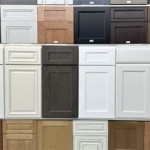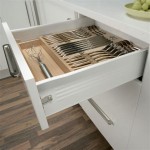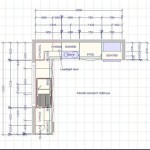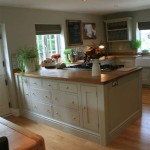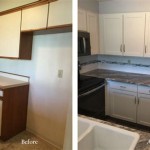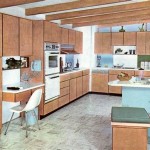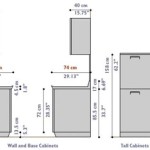Pictures of Kitchen Cabinets With Pulls and Knobs: A Comprehensive Guide
The selection of cabinet hardware, specifically pulls and knobs, is a crucial element in kitchen design. These seemingly small details have a significant impact on both the functionality and aesthetic appeal of the space. Careful consideration must be given to the style, finish, size, and placement of pulls and knobs to ensure they complement the overall design scheme and provide comfortable and efficient access to cabinet contents. Examining pictures of various kitchen cabinet designs with different pull and knob combinations offers valuable insights into the diverse possibilities and helps homeowners and designers make informed decisions.
The visual impact of cabinet hardware should not be underestimated. It acts as jewelry for the cabinetry, enhancing the overall look and feel of the kitchen. The right choice of pulls and knobs can elevate a simple kitchen design to a sophisticated one, while the wrong choice can detract from even the most expensive cabinetry. Therefore, a thorough understanding of the available options and their impact on the overall design is essential.
This article explores various aspects of kitchen cabinet hardware, focusing on pulls and knobs. It aims to provide a comprehensive guide to understanding the different styles, finishes, and placement options, supported by examples and highlighting key considerations for selection.
Understanding the Different Styles of Pulls and Knobs
The first step in selecting cabinet hardware is understanding the different styles available. Pulls and knobs come in a vast array of designs, ranging from traditional to contemporary and everything in between. Each style evokes a distinct aesthetic and complements different kitchen designs. Categorizing these styles is helpful in narrowing down the options and finding the perfect fit for the desired kitchen aesthetic.
Traditional styles are characterized by ornate details, intricate designs, and classic shapes. These often feature curves, embellishments, and antique finishes like oil-rubbed bronze or antique brass. Traditional knobs might display floral patterns, carvings, or porcelain inserts. Traditional pulls often have a more elaborate shape and may incorporate elements like fluted detailing or decorative ends. These styles suit kitchens with a classic, formal, or vintage-inspired design.
Contemporary styles are sleek, minimalist, and often feature clean lines and simple shapes. These pulls and knobs typically have a smooth, unadorned surface and are often made from materials like stainless steel, chrome, or brushed nickel. Geometric shapes, such as squares, rectangles, and cylinders, are common. Contemporary hardware complements modern, minimalist, and industrial kitchen designs. The focus is on functionality and understated elegance.
Transitional styles bridge the gap between traditional and contemporary, offering a balanced blend of both. They often feature simple shapes with subtle details and are available in a variety of finishes. Transitional pulls and knobs are versatile and can complement a wide range of kitchen designs. They often incorporate details from both traditional and contemporary styles, offering a more flexible design choice.
Rustic styles evoke a sense of warmth, charm, and authenticity. They often feature natural materials like wood, wrought iron, or copper. Rustic knobs might have a hammered or textured surface, while rustic pulls might be made from twisted metal or have a distressed finish. These styles are ideal for farmhouse, country, or cottage-style kitchens, adding a touch of rustic charm.
Novelty styles encompass a wide range of unique and unconventional designs. These might include pulls shaped like animals, plants, or other objects. Novelty hardware can add a touch of personality and whimsy to a kitchen. However, these styles should be used sparingly and with careful consideration to avoid overwhelming the overall design.
Examining pictures of kitchen cabinets with various pull and knob styles helps visualize how each style interacts with different cabinet door designs and kitchen aesthetics. This visual reference is invaluable in making informed decisions and selecting hardware that perfectly complements the overall kitchen design.
Exploring Different Finishes and Materials
The finish and material of pulls and knobs play a significant role in the overall look and feel of the kitchen. Different finishes and materials offer different levels of durability, maintenance, and aesthetic appeal. Selecting the right finish and material is crucial for ensuring that the hardware complements the cabinetry and withstands the rigors of daily use.
Stainless steel is a popular choice for contemporary kitchens due to its sleek, modern look and durability. Stainless steel pulls and knobs are resistant to corrosion and easy to clean. However, they can show fingerprints and smudges, requiring regular cleaning. The neutral tone of stainless steel complements a variety of cabinet colors and materials.
Chrome is another popular finish, offering a bright, reflective surface that adds a touch of glamour to the kitchen. Chrome pulls and knobs are durable and easy to clean. However, they can also show fingerprints and smudges and may not be suitable for kitchens with a more rustic or traditional design. Chrome often provides a more polished look compared to stainless steel.
Brushed nickel offers a softer, more muted alternative to chrome. Brushed nickel pulls and knobs have a slightly textured surface that helps to conceal fingerprints and smudges. They are also durable and easy to clean. Brushed nickel is a versatile finish that can complement both contemporary and transitional kitchen designs.
Oil-rubbed bronze is a popular choice for traditional and rustic kitchens. Oil-rubbed bronze pulls and knobs have a dark, antique finish that adds warmth and character to the space. They are durable and require minimal maintenance. The dark tone of oil-rubbed bronze complements cabinets with warm tones and natural wood finishes.
Antique brass is another classic finish that adds a touch of elegance to the kitchen. Antique brass pulls and knobs have a warm, golden tone and often feature intricate details. They are durable and require minimal maintenance. Antique brass complements traditional and vintage-inspired kitchen designs.
Wood pulls and knobs offer a natural, organic look that complements farmhouse and cottage-style kitchens. Wood pulls and knobs can be stained or painted to match the cabinetry or to create a contrasting accent. They require more maintenance than metal hardware and are more susceptible to damage from moisture. However, the warmth and texture of wood add a unique character to the kitchen.
Glass and ceramic knobs offer a decorative touch and can add a pop of color or pattern to the kitchen. Glass knobs are often clear or frosted and can be faceted or smooth. Ceramic knobs can be painted with intricate designs or feature raised patterns. These are less durable than metal hardware and should be handled with care.
The selection of the finish and material should be based on the overall design aesthetic of the kitchen, the durability requirements, and the maintenance preferences. Examining pictures of kitchen cabinets with different finishes and materials helps visualize how these elements interact with the cabinetry and the overall design scheme. This visual guidance simplifies the decision-making process.
Considering Size and Placement of Pulls and Knobs
The size and placement of pulls and knobs are crucial for both the functionality and aesthetic appeal of the kitchen. Incorrectly sized or placed hardware can be uncomfortable to use, detract from the overall design, and even damage the cabinetry. Careful consideration must be given to the size and placement of pulls and knobs to ensure they are both functional and visually appealing.
The size of the pull should be proportionate to the size of the cabinet door or drawer. As a general rule, pulls should be approximately one-third the length of the drawer face. For larger drawers, longer pulls may be more appropriate. For cabinet doors, the pull should be long enough to provide a comfortable grip but not so long that it overwhelms the door.
Knobs are typically used on cabinet doors and smaller drawers. The size of the knob should be proportionate to the size of the door or drawer. A larger knob may be more appropriate for larger doors or drawers, while a smaller knob may be more suitable for smaller doors or drawers.
The placement of pulls and knobs should be consistent throughout the kitchen. Knobs are typically placed in the center of the cabinet door or drawer. Pulls can be placed horizontally on drawers and vertically on cabinet doors. However, there are many variations and personal preferences to consider. It is essential to maintain a consistent placement pattern to create a cohesive and visually appealing design.
For drawers, pulls are often centered horizontally on the drawer face. However, on wider drawers, two pulls may be used for added stability and visual balance. The distance between the two pulls should be approximately one-third the width of the drawer. It is important to consider the weight and contents of the drawer when determining the number and placement of pulls.
For cabinet doors, pulls are typically placed vertically towards the edge of the door, allowing for a comfortable grip. However, the specific placement can vary depending on the style of the door and the design of the pull. The placement should be consistent across all cabinet doors to create a uniform look.
It is often helpful to install temporary pulls or knobs to experiment with different sizes and placements before committing to the final installation. This allows for adjustments and ensures that the hardware is both comfortable to use and visually appealing. Using painter's tape to mark the desired positions can also be a helpful visual aid before drilling any holes.
Consider the ergonomics of the hardware. The pulls and knobs should be easy to grip and use, especially for individuals with limited mobility. The placement should be comfortable and accessible for all users. Evaluating the ergonomics of the hardware is crucial for ensuring that the kitchen is both functional and user-friendly.
Pictures of kitchen cabinets with different pull and knob sizes and placements can provide valuable inspiration and guidance. These visual examples help homeowners and designers understand the impact of different placement options and make informed decisions about the size and placement of cabinet hardware. Viewing this imagery can lead to a more functional and aesthetically pleasing final product.

How To Choose Between Knobs Or Pulls On Kitchen Cabinets

Cabinet Pulls Handles Solid Brass Gold Pull Handle Knob T Bar Kitchen Cupboard Hardware White Cabinets

Best Kitchen Cabinet Hardware 2024

Best Kitchen Cabinet Hardware 2024

High Polished Luxury Gold Cabinet Pulls Knobs Drawer For Homes Offices Cafes Restaurants Etc

The 16 Most Popular Knobs And Pulls For Kitchens
Cabinet Pulls Knobs Roundup Synonymous

7 Unique Kitchen Cabinet Hardware Options

Cabinet Knob Pulls Vs Handles Refurbishing Ideas Doors N More

Modket Brushed Nickel Modern Kitchen Cabinet Handles Pulls Knobs Hardware Bathroom Drawer Dresser Stainless Steel
Related Posts

